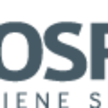Effective Tips to Break the Chain of Infection
Infectious Diseases: Breaking the Chain

The recent global outbreak of COVID-19 pandemic was an alert for all of us to stay up to date on the ways infectious diseases spread and the best methods to prevent them from spreading. We all have to be attentive towards implementing effective hygiene tips to break the chain of infection in the first place. In order to achieve the desired outcomes, we should start by understanding the way infections work and affect our immune system. Let’s review it together.
What is an Infectious Disease?
To put it short, infection diseases are caused by pathogenic organisms, like viruses, fungi, bacteria, and parasites. Those organisms can generally be transmitted by animals, as well known as zoonotic diseases, other people, and various environmental sources like water.
Generally, infectious diseases are differentiated from the non-communicable or non-infectious diseases like hereditary, psychological, or deficiency diseases, primarily because infectious diseases are caused by organisms that are not naturally found in the body.
How Are Infections Transmitted?
Typically, there are several events that lead to the transition and spread of infections between organisms, commonly referred to as the “chain of infection.”
Understanding The Chain Of Infection
No matter the pathogenic organism that causes an infection there are a series of events and links that construct the general chain of infection. Those are the following:
The infectious agent: It is the pathogen (germ) that causes diseases and starts the infection process.
The reservoir: This primarily refers to a place where germs can live and multiply. It can include people, animals and insects, soil and water.
Portal of exit: This is the means through which the infectious agent can leave the reservoir. It includes aerosols, unclear objects, open wounds and body excretions like coughing, sneezing, and saliva.
Mode of transmission: This is the way germs move, or spread, from one place to another. The modes can generally be divided into the following categories:
Droplet transmission: In this category, the infectious agent spreads through large respiratory droplets in the air, which later can be breathed in by another person. These droplets are typically released when an infected person coughs, sneezes or talks, travelling a short distance (about one metre) before falling to the ground. At the same time, those droplets can also contaminate nearby surfaces.
Direct contact: In this scenario, the transition of the infectious agent is done through direct contact with an infected person/animal or their bodily fluids.
Indirect contact: In the case of indirect transition an uninfected person makes physical contact with a contaminated surface.
Insect transmission: Prasites such as mosquitoes and ticks can contain various disease-causing pathogens which can be transmitted to humans.
Food transmission: Keep in mind that there are some infectious agents that can contaminate food or water, resulting in infection in case of its consumption.
Portal of entry: It is the means through which the infectious agent can enter a new host. It can be done through the respiratory tract, broken skin, mucous membranes, catheters, and tubes.
The susceptible host: This can be any individual susceptible to developing an infection when the infectious agent enters their body.
Tips to Break The Chain Of Infection
Key measurements of controlling and preventing the spread of infections include, but are not limited to the following aspects:
Hand hygiene: You should thoroughly study and understand effective hand hygiene practices including the WHO Five Moments. On a basic level, hand hygiene includes frequent handwashing with soap and water or the use of antibacterial hand sanitisers that contain at least 60% alcohol.
Be attentive towards following the proper sanitising and handwashing techniques, which suggest when and how to perform your hygiene practices for the most effective results.
Make intelligent use of your hygiene products. Always make sure to be attentive towards factors such as the efficacy of the antiseptic agent, professionals’ acceptance of the product and product availability and access before making a purchase. Make sure to check product labels for detailed information.
Use personal protection equipment. Don’t forget that, in outbreak settings, appropriate personal protective equipment (PPE) should be used if possible in potential norovirus transmission areas for the minimisation of infection risk.
PPE usually includes:
- Gloves
- Masks
- Eyewear
- Gowns.
Make sure to keep your surroundings clean. Conduct regular deep cleaning in your working environment or home. Conduct regular and routine environmental cleaning when you can disinfect frequently touched environmental surfaces such as door handles, phones, tables, bathroom taps, lift buttons, and washrooms, ideally on a daily basis.
COVID-19 was a great example of how infections can affect almost every aspect of our lives. But it was also a good reminder of how easy the prevention methods of its spread can be. Make sure to follow the tips mentioned in this article and make your own contribution in breaking the chain of this and the future infections.






Comments
There are no comments for this story
Be the first to respond and start the conversation.